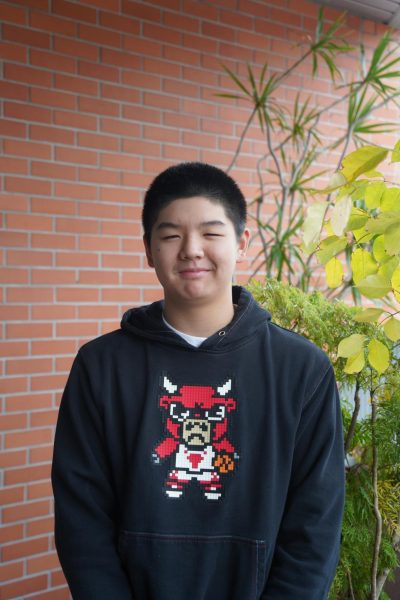Before any current Taipei American School (TAS) student was born, the girls’ badminton team was already lining up Interscholastic Association of Southeast Asian Schools (IASAS) championships—and they haven’t stopped since. As of 2025, for 21 consecutive years, the team has built a legacy of dominance that shows no signs of slowing down. But what does it take to stay at the top for so long? Beyond the trophies and titles, let’s take a look at their daily grind and the mindset that keeps them winning.
Winning might look easy from the outside, but the real story is in the consistency, sweat, and hard work behind the scenes. During Season Three of the TAS Athletics season, the girls’ badminton team practiced every day for one and a half hours. They first start off with warm-ups, such as stretching or jogging, to get their heart rates up. After this, they do conditioning exercises, such as running up the stairs or jumping rope. Then, they warm up with starting shots before finally going into their specialized training. Specialized training is where singles players and doubles players split up and execute specific drills to help them improve their skills. “I’m a singles player, so I can work on things that are more specific to singles,” noted co-captain Audrey L. (‘26).
The team’s success stems from its talented and hardworking players, and with the leadership of the head coach, Julia Lee. Coach Lee leads with a balance of high expectations and encouragement. Coaching a group that “holds itself to a high standard,” she says, she’s fortunate to work with players who are incredibly self-motivated, often training on weekends and pushing themselves year-round. “My role is to recognize their effort, acknowledge their growth, and provide consistent, constructive feedback,” Lee explains. For her, creating a positive, supportive environment isn’t just important — it’s what helps her players thrive. “Get to know your players,” Coach Lee advises. “Build relationships, understand their motivations, and help them grow not just as athletes but as people…character matters more.” It’s that bond that fuels the team’s resilience, whether powering through brutal drills or staying composed under tough conditions in IASAS— and even inspires non-travel players to cheer from the sidelines.
Above all, she credits her players’ relentless dedication: “People see the gold medals but don’t always see the grit, sacrifice, and determination behind them,” a testament to their off-season work ethic and unwavering drive to improve and win.
But with their winning streak comes a tremendous amount of pressure. Every year, new players join the team and feel the pressure to uphold the team’s legacy, not just compete. But for the team, the pressure is there, but it doesn’t consume them. What keeps that pressure from taking over? It’s the support they all have for each other, on and off the court. “We all support each other, and we try to keep the atmosphere pretty light, to try to negate the effects of the pressure…I think it’s most important that they have fun and they enjoy the experience rather than just thinking, like, oh, we have to continue this streak,” said Audrey. All the captains make sure that the players know that, win or lose, they will support them. “I tell [my teammates] that it’s okay, whatever outcome happens,” said co-captain Joanne S. (‘26). The Gold medals are a remarkable achievement, but the true victory lies in the unwavering support they have for one another—the medals are just a reflection of that bond.

![Photo of the girl's varsity badminton team [PHOTO COURTESY OF TAS ATHLETICS]](https://blueandgoldonline.org/wp-content/uploads/2025/05/BadmintonTeam-04839-1200x675.jpg)
![Helen Zia talks to students in the auditorium at Flex. [ANNABELLE HSU/THE BLUE&GOLD]](https://blueandgoldonline.org/wp-content/uploads/2025/09/helen-zia-1200x800.jpg)
![[PHOTOS COURTESY OF MS. VINOD]](https://blueandgoldonline.org/wp-content/uploads/2025/09/Untitled-design-1200x675.png)
![Mr. Sean Patella-Buckley [PHOTO COURTESY OF MR. PATELLA-BUCKELY], Mr. Yoonsoo Kang [PHOTO COURTESY OF MR. KANG], Ms. Mikayla Patella-Buckley [PHOTO COURTESY OF MS. PATELLA-BUCKLEY], Ms. Lien Martens [PHOTO COURTESY OF MS. MARTENS],](https://blueandgoldonline.org/wp-content/uploads/2025/09/teachers-1200x675.png)
![Sofia Valadao [Erin Wu/The Blue&Gold]
Erin Wu [Annabelle Hsu/The Blue&Gold]](https://blueandgoldonline.org/wp-content/uploads/2025/05/erin-sofia-pic.png)
![Dr. Simeondis, Mr. Anderson. [Annabelle Hsu/The Blue&Gold]](https://blueandgoldonline.org/wp-content/uploads/2025/05/teachers-1200x675.jpg)
![[PHOTO COURTESY OF UNCULTURED, JUNIPER AND CO.]](https://blueandgoldonline.org/wp-content/uploads/2025/05/student-businesses-1200x675.png)
